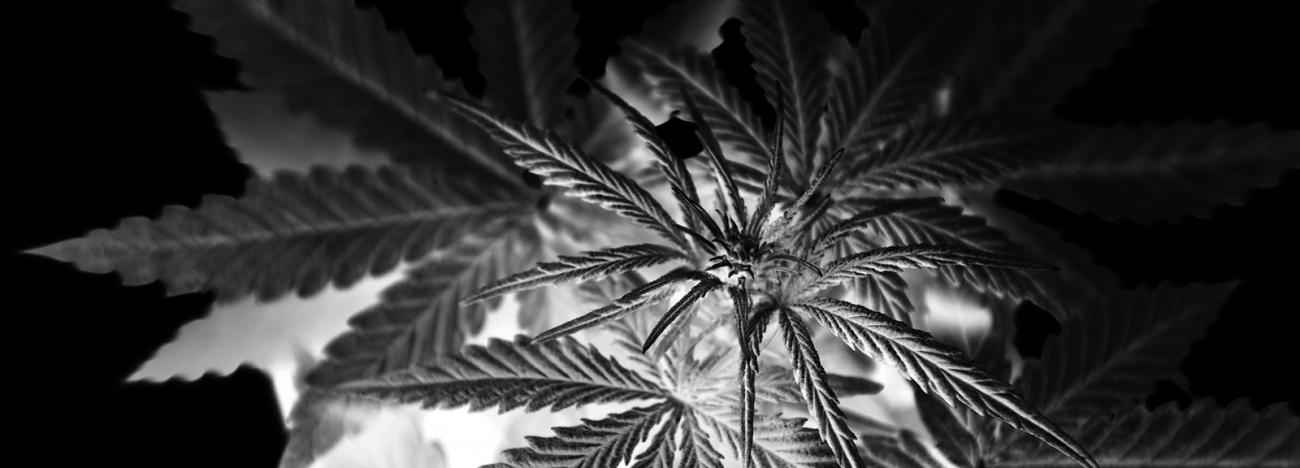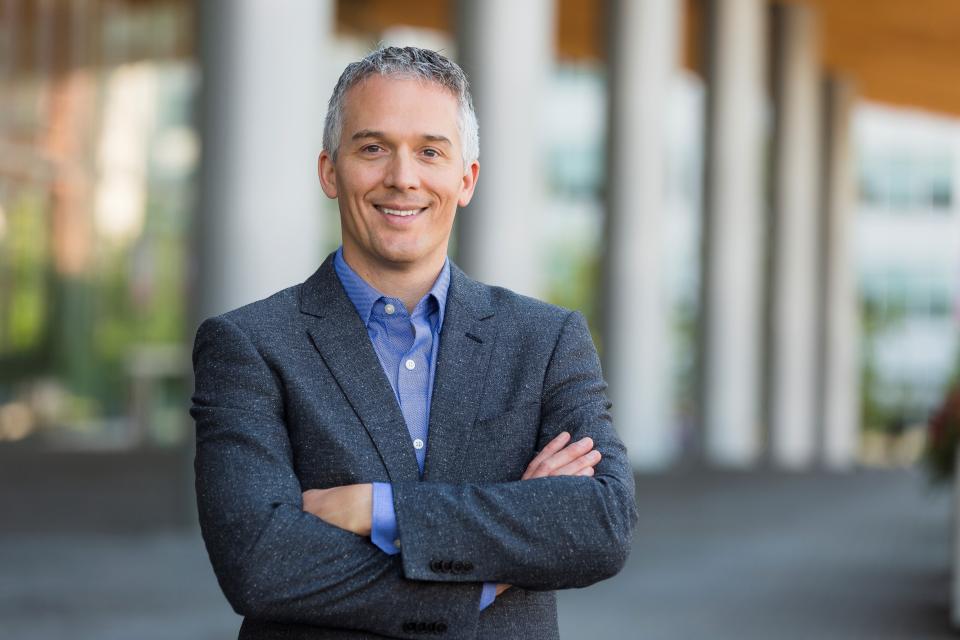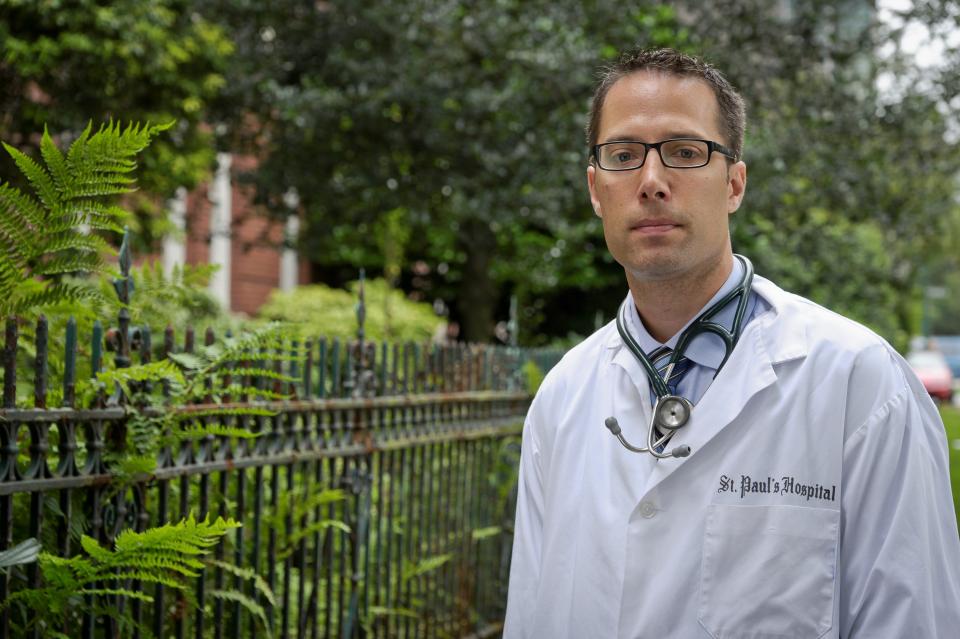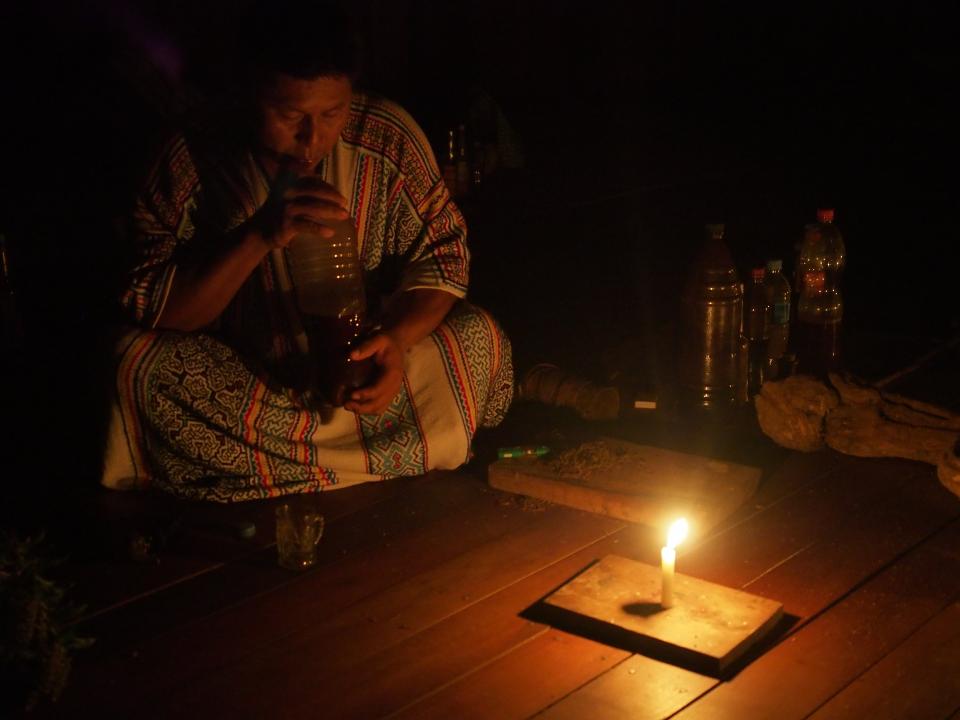Altered Perceptions
Canada is talking about drugs.
They’ve always been on the radar – a statistic here, a celebrity death there – but lately the headlines have been awash with daily tales of legalization, overdoses, and new discoveries, renewing public interest in natural and synthetic mind-altering substances.
Such talk is always accompanied by the shadow of stigmatization, as drug use is often framed in the context of criminality or culture wars, only regarded as a health issue as an afterthought. But the growing acceptance of medical cannabis, the need for new ways to combat the opioid crisis, and an unprecedented attention to mental health issues has Canada leading a sea change in pharmacological research, as once illicit drugs with a reputation for harm are earning serious attention for their potential to treat some of our most pressing health challenges.
“We are at an extraordinary intersection of a social‑change movement and scientific explosion that will directly affect the lives of people around the globe,” says Zach Walsh, an associate professor in psychology at UBC’s Okanagan campus who studies the effects of cannabis on posttraumatic stress disorder (PTSD). “Canada and British Columbia are leading the way in the acceptance of using cannabis for therapeutic purposes.”
It’s true that we were among the first countries in the world to have a medical cannabis program, and most of the licensed producers now chasing the recreational market in Canada have been providing medical cannabis for years. So while the headlines are new, the science is not – prescription weed has been available in Canada since 2001. But now, platforms like Facebook, YouTube, and Reddit have given a face and a voice to advocates for drug policy that’s informed more by science and less by stigma. And the country is taking note.
A trickle-down effect of cannabis shuffling off its immoral coil is a growing public interest in the more transformative, spiritual experiences that one can get from peyote, ayahuasca, or psilocybin mushrooms. Used by Indigenous peoples for centuries, such substances are known as entheogens, a neologism coined in 1979 by a group of botanists – the Greek words theos [god] and genesis [origin] – meant to denote giving birth to the spirit within.
Legal issues be damned, social media has brought about something of a renaissance for entheogenic use via the public airing of users’ experiences. “In the case of ayahuasca, it’s the narratives of people who are sharing YouTube videos of themselves,” says Kenneth Tupper, a director at the BC Centre on Substance Use (BCCSU) and adjunct professor in UBC’s School of Population and Public Health. “They’re talking about what kind of transformative experience they’ve had, what insights they’ve gotten from drinking it.”
These first-person narratives range from reports of intense personal growth to the curing of eating disorders. But while the anecdotal evidence is intriguing, there is a dearth of quantitative, clinical studies of entheogenic substances – and it’s possible this void can never be properly filled.
The effects of entheogenic drugs are difficult to study beyond qualitative observation. Removing traditional drugs from their Indigenous environs changes the nature of the experience, a concept known as “set and setting” – one’s mindset and the setting for the experience – both difficult things to quantify in a laboratory experiment. Unlike the Cartesian mind/body split in contemporary Western culture, spirituality and health are often intertwined in Indigenous cosmologies, and the secularization of modern medicine has largely left behind that spiritual dimension so crucial to the entheogenic construct.
“There is so much we don’t know about the use of medicinal plants. Refining medicines derived from cannabis and other plants will have a dramatic effect on the health of Canadians and people worldwide. How do we make the best use of these plants and combine them with other therapies to create better outcomes for people who are suffering?”
~ Zach Walsh
Laboratories in Brazil and Spain have been attempting clinical ayahuasca studies for years, but swallowing ayahuasca in a freeze‑dried capsule under an MRI scanner just isn’t the same as lying beneath the stars while a shaman chants sacred incantations and blows smoke in your face. Even so, observational experiments in which entheogens are removed from their traditional context have shown positive results for those patients who reported a transformative event.
“People who have a profound mystical type of experience are often the ones who have the best therapeutic outcomes,” says Tupper, “which again points back to traditional and Indigenous knowledge systems. It makes me wonder whether we need to reinvent the wheel, whether or not traditional shamanic practices have already perfected the use of these kinds of tools and recognized the relationship between spirituality and health in a way that contemporary Western medicine has kind of lost touch with.”
“There is so much we don’t know about the use of medicinal plants,” adds Walsh. “Refining medicines derived from cannabis and other plants will have a dramatic effect on the health of Canadians and people worldwide. How do we make the best use of these plants and combine them with other therapies to create better outcomes for people who are suffering?”
It’s unfortunate then – and long a bane for the scientific community – that the distinctions between classes of drugs is confusing to the layperson.
Like cannabis and entheogens, heroin and cocaine are plant-based. But where the former have shown promising therapeutic applications, the latter have been wearing holes in the social fabric for decades. Yet, according to the US Controlled Substances Act of 1970, upon which most of the Western world’s drug policy is based, marijuana and peyote are classified as Schedule 1 drugs – the most dangerous category – while cocaine and fentanyl (the deadly opioid at the centre of the overdose crisis) fall under Schedule 2. Approximately 4,000 Canadians died from fentanyl‑related overdoses in 2017. Zero died from smoking pot.
Synthetic drugs, particularly psychedelics such as Lysergic acid diethylamide (LSD, or acid) and Methylenedioxymethamphetamine (MDMA, or ecstasy), are similarly stigmatized, both appearing in the Schedule 1 category, despite their relative safety (they are rarely habit-forming or fatal).
They also happen to be among the most promising of all hallucinogenic therapies, and we are reaching a point where public perception is catching up to what the science has been showing for years – that synthetic psychedelics show enormous promise for curing a range of addictions and mental disorders.
Pharmacologically different from addictive substances such as alcohol, tobacco, cocaine, and opiates (a class of drugs that acts on similar dopamine-reward systems that lead to chronic dependency patterns), synthetic psychedelics are not self-reinforcing, meaning they don’t leave the user waking up in the morning craving another hit. Synthetic psychedelics, in fact, have demonstrated potential as a treatment to end addictions altogether, as well as anxiety, depression, PTSD, eating disorders, and obsessive‑compulsive disorders – a whole cluster of mental illnesses that are regularly prescribed patented medications that mask symptoms rather than heal patients.
Working with pure, pharmaceutical-grade substances, institutions like the Multidisciplinary Association for Psychedelic Studies (MAPS) – Kenneth Tupper serves on the Board of Advisers for the Canadian branch – are plotting a revolution in mental health treatment. Current research at the Santa Cruz-based lab includes MDMA‑assisted psychotherapy to help heal the psychological and emotional damage caused by sexual assault, war, violent crime, and other traumas, as well as anxiety treatment for autistic adults and people suffering through life‑threatening illnesses. The lab has also just completed the first double‑blind, placebo-controlled study of the therapeutic use of LSD in human beings since the early 1970s.
As promising as the research is, psychedelics – whether plant-based or lab-grown – still carry the baggage of a checkered history.
According to UBC professor of medicine Evan Wood – who is the Canada Research Chair in Inner City Medicine and director of the BC Centre on Substance Use – MDMA has shown exceptional promise working as an empathogen that reduces anxiety but provides users a sense of connection, without the hallucinogenic ego‑dissociation that often accompanies psilocybin or LSD. Phase 2 trials of MDMA administered to veterans of the Iraq and Afghanistan wars with severe PTSD resulted in the veterans being able to “package up those experiences,” says Wood, “in a way that enabled them to move on to where they no longer met the diagnostic criteria for PTSD.”
Where MDMA could mitigate PTSD without the risk of addiction, psilocybin and LSD could conquer addiction itself, simply by offering abusers a perspective on themselves that engenders positive changes in behaviour.
“One of the biggest mysteries in the treatment of addiction is how people can make a decision to make a change in their life and really follow through with it,” says Wood, who is also medical director for Addiction Services with Vancouver Coastal Health. “Neuroimaging studies have shown how on psychedelic drugs like psilocybin or LSD, new connections are formed between our thoughtful brain and that reward system, connections that hadn’t existed before and couldn’t be brought about by normal psychotherapy. And through that process, people appear to be able to follow through on their intentions around recovery.”
As promising as the research is, psychedelics – whether plant-based or lab-grown – still carry the baggage of a checkered history. Simply uttering the phrase “the Sixties” evokes the spectre of music and rebellion, fuelled by a Wild West of psychedelic use, and the characters that became synonymous with unchecked drug experimentation: Owsley Stanley, the Grateful Dead’s audio engineer who also supplied most of the Bay Area music scene with LSD; Ken Kesey, who founded the “Acid Test” parties and helped bring the beat movement into the hippie era; and Timothy Leary, the Harvard psychologist who conducted LSD experiments on his graduate students and became a figurehead of the counterculture, popularizing such phrases as “Question authority” and “Turn on, tune in, drop out.”
While the spiritually transformative experiences were as real then as they are now, the lack of sufficient scientific oversight and America’s prudish drug laws robbed the movement of any sense of legitimacy, and brought ruin to its practitioners. Leary, Stanley, and Kesey all ended up in prison on drug offenses, the latter two becoming recluses upon their release.
Canada was a different story altogether. As early as the 1950s, Saskatchewan was leading the world in treating issues such as addiction, paranoia, and manic depression with LSD. Under Saskatchewan Premier Tommy Douglas, author of Canada’s modern healthcare system, Weyburn Mental Hospital (where the term “psychedelic” was first coined) conducted bold experiments to treat mental disorders, allowing doctors and nurses to take LSD to better understand and empathize with the mentally ill – a practice that reportedly had a profoundly constructive effect on the hospital’s population. The psychiatrist who led the treatment, Humphry Osmond, introduced trip-lit author Aldous Huxley to mescaline, and had earlier used LSD to cure Bill Wilson – co-founder of Alcoholics Anonymous – of his drinking problem.
But it wasn’t long before LSD and other synthetic psychedelics spread from the pharmacy to the streets. As a symbol of the counterculture, LSD was quickly demonized and outlawed in US states through the 1960s, and Canada in 1968, leading to what was essentially a worldwide ban at the United Nations Convention On Psychotropic Substances in 1971, classified among drugs with “no currently accepted medical use.”
The last North American institution to legally use LSD therapy was New Westminster’s Hollywood Hospital in 1971. Instead of drugs of use, psychedelics became drugs of abuse, and their potential therapeutic value was lost in the global fearmongering.
“The drug laws that essentially kept these drugs out of the hands of scientists and doctors didn’t do so much to keep them off the street, but resulted in essentially shutting down human-subject research for a good 30 years or so pretty much everywhere around the world,” says Tupper. “So we basically lost a whole generation of potential researchers and medical professionals who lost interest, or in many cases didn’t even learn about it – medical schools stopped teaching the history of psychedelic research.”
At the turn of the century, however, things began to change. Underground experimentation had continued, and by the 1990s a new counterculture had arisen in the rave and nightclub scenes that centered around the mood-altering effects of MDMA. Ecstasy became the default party drug, and an increasing liberalism in the West encouraged intrepid researchers to navigate the bureaucracy of administering controlled substances, renewing interest in the potential mental health benefits of synthetic drugs.
In a bit of a virtuous circle, positive results from these early studies led to more interest, which meant more money, which meant more research. Far from the ethically questionable experimentation of the 1960s, 21st-century research is rigorously controlled by medical professionals who are keenly aware of the optics of the situation. Protocols ranging from university ethics approvals processes to Health Canada clinical trial regulations help reinforce a sense of precaution absent from 20th-century research.
“People are desperately in need of innovative treatments for the malaises of modernity – things like anxiety, depression, PTSD, addictions – that are so rampant in society. We really need to explore these new clinical tools that may not be that far away from us, but have long been dismissed as having ‘no medical value and highly likely to be abused’.” ~ Kenneth Tupper
And though the research has tiptoed at a snail’s pace over the past two decades, in many cases the results have been deeply encouraging, perhaps even providing a path away from the scourge of addictive prescription opiates that have overwhelmed our medical system.
“People are desperately in need of innovative treatments for the malaises of modernity – things like anxiety, depression, PTSD, addictions – that are so rampant in society,” says Tupper. “We really need to explore these new clinical tools that may not be that far away from us, but have long been dismissed as having ‘no medical value and highly likely to be abused’.”
The optics of psychedelics as drugs of abuse, though largely overcome by the medical community, still linger in the eyes of government agencies, a fact that limits research to institutions that can pony up the necessary capital through private donors. To date, neither the Canadian Institutes of Health Research nor the US National Institute on Drug Abuse – the world’s largest funder of addiction research – has supported research in this area.
“We’re kind of rubbing pennies together to do this work,” says Wood, “but I think it really is the most exciting area in mental health right now. Substance use in general doesn’t get much funding in comparison to the burden of disease. Addiction medicine for a long time has been an unwanted stepchild in the healthcare system, and has not received the appropriate funding by any stretch of the imagination.”
Our tendency to treat addiction as a criminal issue rather than a medical issue – a War on Drugs that should have been fought as a War on Dependency – has created an enduring stigma of lawlessness and abuse that makes political entities hesitant to commit tax dollars to research, no matter how promising it is.
Some believe the Canadian Institutes of Health Research should have a dedicated substance‑use research institute that focuses on tobacco, alcohol, opioids, and behavioral addictions like eating disorders and gambling. Currently, such research is subsumed under the National Institute for Mental Health, Neuroscience, and Addiction, where the addiction funding is limited.
Until such a milestone is achieved, the hope is that existing philanthropic support will be enough to get the pilot data needed to achieve real funding from federal granting agencies. But if the private money dries up, there is no viable path to public money, and the research may once again may be lost or delayed. For a researcher in a scientific lab, if you don’t get grant money you don’t do research, and even the most dedicated practitioners will stop requesting funds they know they won’t receive.
This would be a tremendous loss for a promising new direction for treatment. The existing evidence for psychedelic therapy as a viable tool to fight alcohol, tobacco, and opioid addiction is compelling, and even the US Food and Drug Administration has recognized – though not yet funded – MDMA as a potential breakthrough therapy to combat PTSD.
Evan Wood is optimistic. Many of his senior-level team at the BC Centre on Substance Use were formerly with the BC Centre for Excellence in HIV/AIDS, which wrote the provincial guidelines for the treatment of HIV infection, bringing about a 90 per cent reduction in new HIV cases and AIDS deaths across the province. Since British Columbia has no such guidelines and standards for addictive disorders, there is a lot of variability in terms of how care is provided. The BCCSU is trying to step into this vacuum, sharing therapeutic guidelines for the treatment of opioid addiction in BC on their website, a process that has become the de facto national guideline.
The challenge now is for the healthcare system to step up – to separate stigma from evidence, fund necessary research into these promising therapies, and establish guidelines and the blueprints for their implementation, “to enable the fruits of that research to become meaningful for people that are affected by these conditions,” says Wood. “So that’s the idea – we’re not off in some laboratory studying things and disconnected from the healthcare system. We have a mandate to study and implement and promote best practice. If the research can confirm what the pilot studies and what the original research showed, we may have something with enormous potential to improve some of the most challenging and vexing health system challenges that we face.”





































